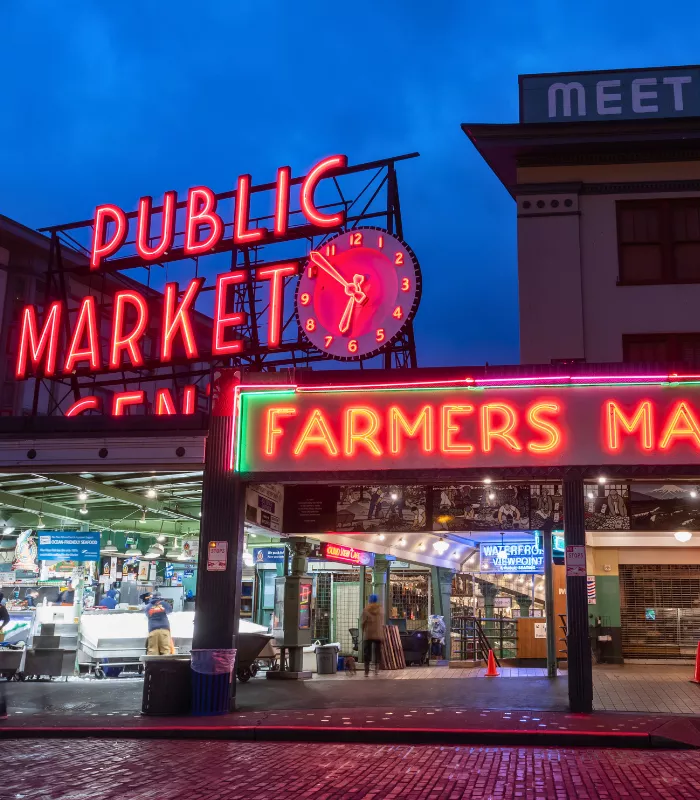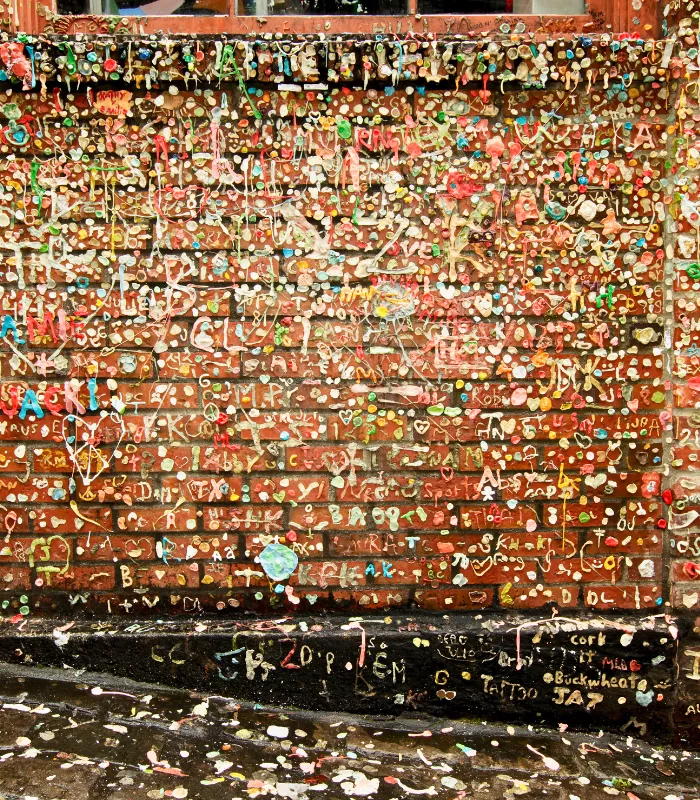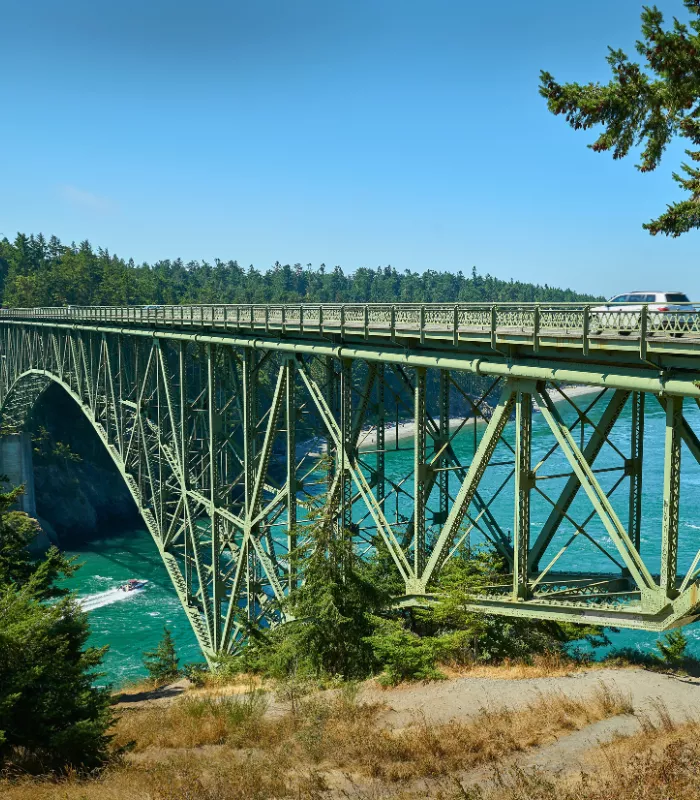Washington takes a more sophisticated approach – disguising commercial exploitation as authentic Pacific Northwest experiences.
Here’s the deal: paying $35 to ride an elevator while Seattle’s famous fog blocks your view isn’t atmospheric.
It’s just expensive blindness with a gift shop attached.
The state that gave us grunge music has perfected the art of making tourists feel foolish for expecting value.
1. Pike Place Market, Washington
The historic Pike Place Market in Seattle opened in 1907 as the oldest continuously operating farmers market in the United States.
Today it attracts millions of visitors annually who come to see the famous fish throwers and explore the crowded stalls.
The market is consistently packed with tourists and vendors selling overpriced local goods.
The authentic farmers market charm has been replaced by tourist-focused businesses charging premium prices.
Long lines snake around every corner making navigation difficult for older visitors.
Why It’s On This List: Reviews consistently mention overcrowding, inflated prices, and a commercialized atmosphere that lacks authenticity.
2. Seattle Space Needle, Washington
Built for the 1962 World’s Fair, the 605-foot Space Needle stands as Seattle’s most recognizable landmark.
General admission tickets cost between $35-$46 per person for elevator access to the observation deck.
The structure draws over 1.3 million visitors yearly seeking panoramic city views.
Unfortunately, Seattle experiences overcast skies about 226 days per year.
That’s roughly 80% of the time when visibility is poor or completely blocked by clouds.
The gift shop and restaurant at the top charge premium prices that squeeze additional dollars from visitors.
Why It’s On This List: Multiple studies rank it as the #27 worst tourist trap globally due to high prices and frequent poor weather conditions blocking views.
3. The Gum Wall, Washington
Located in Post Alley near Pike Place Market, the Gum Wall became a tourist attraction in the late 1980s.
Theater patrons waiting in line began sticking their chewed gum on the brick wall.
Over decades, millions of pieces of gum have accumulated creating colorful but unsanitary layers.
The narrow alley often reeks from the mixture of old gum, saliva, and outdoor odors.
Crowds of tourists taking selfies make movement through the area difficult.
Many visitors describe feeling disgusted rather than entertained by this supposed landmark.
Why It’s On This List: Tourist reviews frequently mention the terrible smell, unsanitary conditions, and disappointment that it’s nothing more than accumulated litter.
4. Original Starbucks Location, Washington
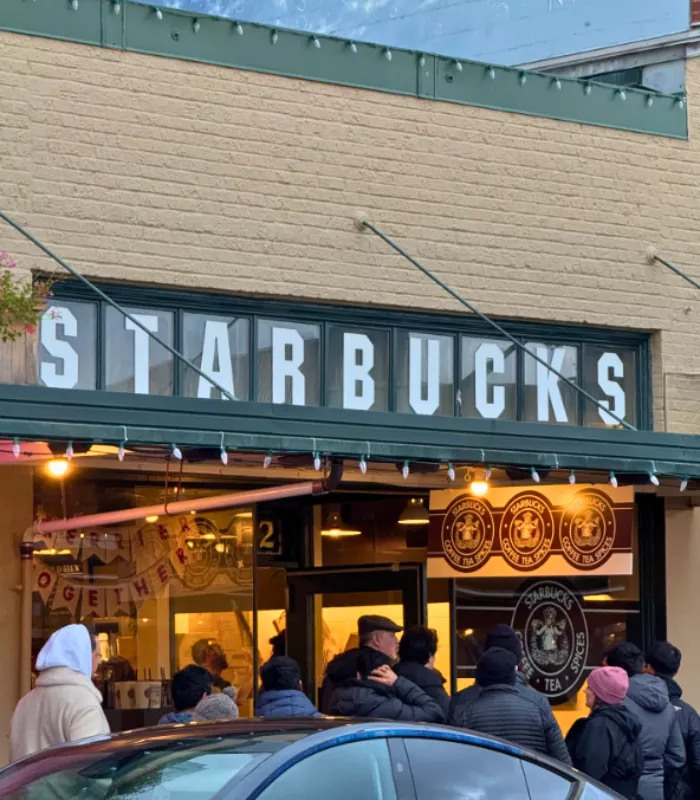
The very first Starbucks coffee shop opened in Pike Place Market in 1971.
Coffee enthusiasts make pilgrimages to this historic location expecting a unique experience. However, the store operates exactly like any other Starbucks worldwide with identical menu items and corporate atmosphere.
Long lines of tourists create wait times of 30-45 minutes during peak seasons.
The cramped interior space becomes uncomfortable when packed with visitors taking photos.
You’re better off visiting any of the thousands of other Starbucks locations for the same coffee without the hassle.
Why It’s On This List: Over 5,000 reviews criticize it as pointless since it offers nothing different from regular Starbucks stores but with much longer waits.
5. Seattle Duck Tours, Washington

These hybrid bus-boat vehicles promise unique land and water tours of Seattle for $28-$38 per person.
The amphibious vehicles drive through city streets before entering Lake Union for water views. Marketing materials emphasize the novelty of the dual-mode transportation.
The tours feel scripted and cheesy with forced entertainment that appeals more to children than adults.
The vehicle windows often provide limited visibility compared to regular tour buses.
Water portions of the tour offer views easily accessible via much cheaper ferry rides or waterfront walks.
Why It’s On This List: Visitors consistently describe the experience as overpriced, corny, and offering nothing special compared to cheaper alternatives like Washington State Ferries.
6. Deception Pass Bridge, Washington
This bridge connecting Whidbey and Fidalgo Islands ranks among the most photographed bridges in America.
The structure spans dramatic waters with scenic mountain backdrops making it popular with photographers. However, the actual experience of crossing the bridge feels anticlimactic.
The bridge itself is simply a functional transportation infrastructure. Walking across provides limited photo opportunities and can be windy and uncomfortable for older visitors.
Most impressive views require hiking to distant vantage points rather than standing on the bridge itself.
Why It’s On This List: The reality of visiting doesn’t match the impressive photos seen online, leaving many feeling disappointed by the underwhelming experience.
7. Long Beach World’s Largest Frying Pan, Washington
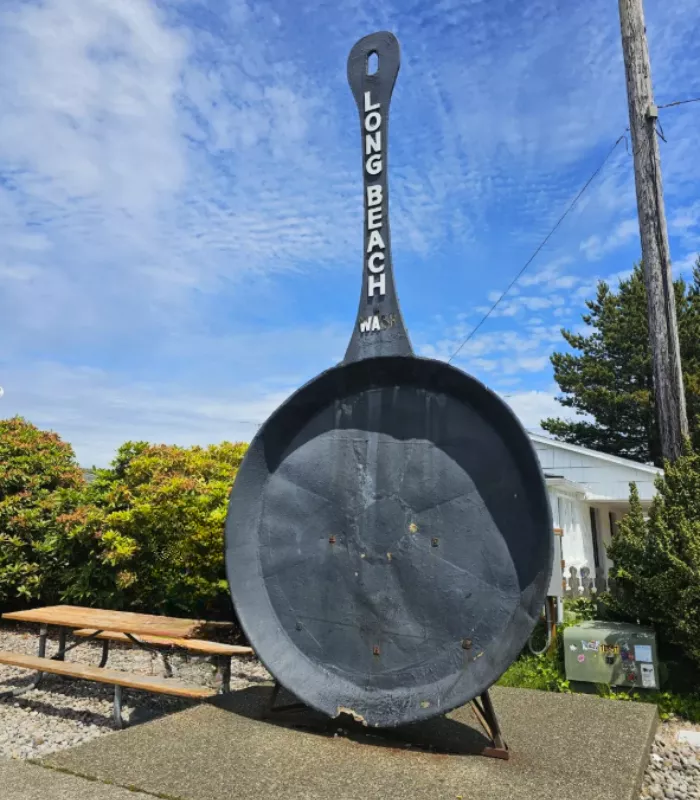
Located in Long Beach, this roadside attraction claims to be the world’s largest frying pan. The oversized cooking implement sits as a photo opportunity for travelers driving along the coast.
Local tourism materials promote it as a must-see landmark.
The attraction consists of nothing more than a large metal pan mounted for display.
Most visitors spend less than five minutes taking photos before realizing there’s nothing else to see.
The novelty factor wears off immediately and provides no educational or entertainment value.
Why It’s On This List: Reviews describe it as completely underwhelming with no substance beyond its novelty size, making it a classic roadside tourist trap.
8. Ye Olde Curiosity Shop, Washington
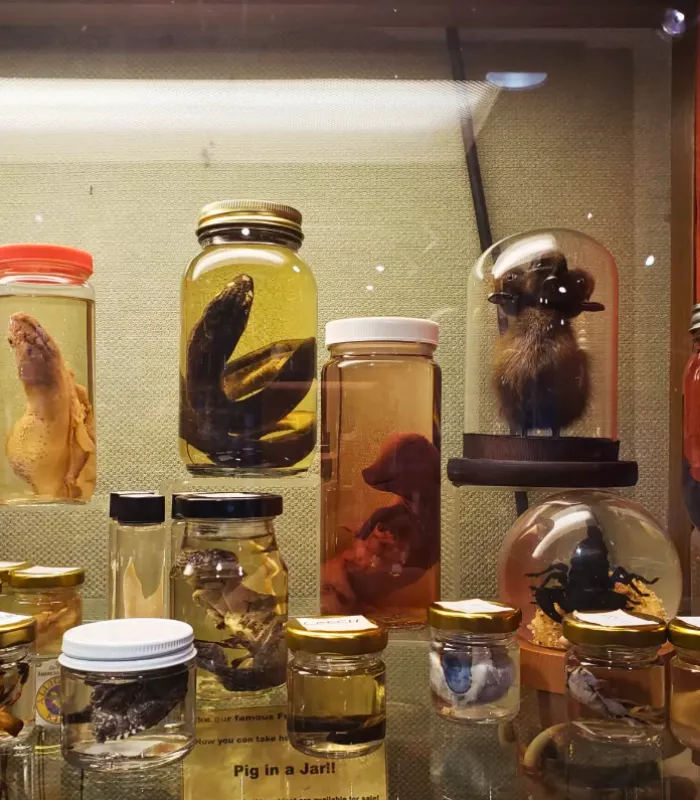
Operating since 1899 on Seattle’s waterfront, this shop markets itself as a quirky museum and gift store. Display cases contain oddities like shrunken heads, mummies, and unusual artifacts mixed with typical tourist souvenirs.
The attraction charges admission fees for viewing the curiosities.
Many displays appear fake or of questionable authenticity according to visitor reviews. The cramped layout becomes uncomfortable when crowded with tourists.
Overpriced souvenirs fill most of the floor space while the actual curiosities occupy small areas.
Why It’s On This List: Visitors frequently complain about paying admission to see potentially fake artifacts while being pressured to buy expensive souvenirs.
9. Reptile Zoo, Washington
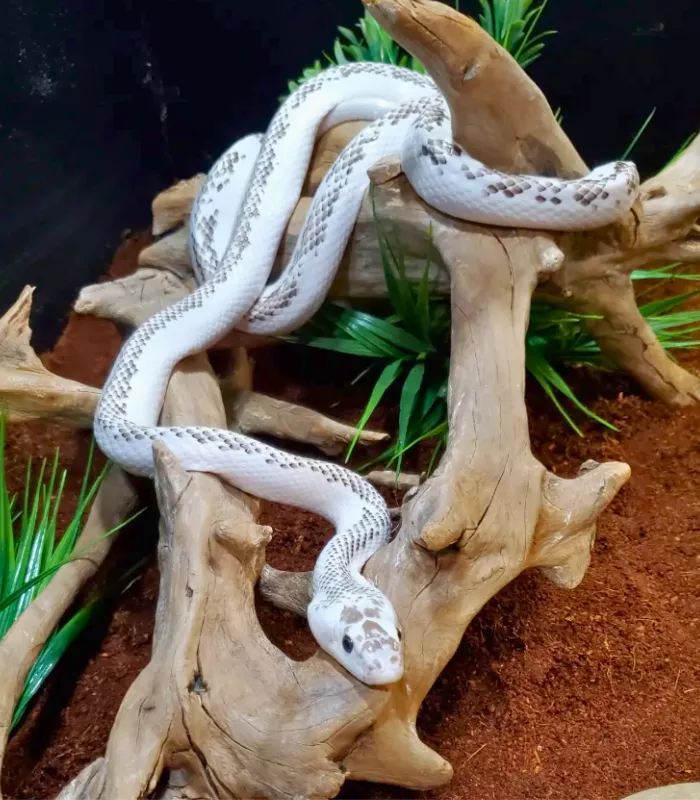
Located in Monroe, this small zoo focuses exclusively on reptiles and amphibians. Highway signs advertise it heavily to passing motorists as a family attraction.
The facility houses various snakes, lizards, and other cold-blooded animals including an albino alligator.
The facility is quite small with limited exhibits that can be viewed in under 30 minutes. Admission prices seem high considering the size and scope of animal displays.
Many exhibits appear dated with minimal educational information provided about the animals.
Why It’s On This List: Unless you’re specifically interested in reptiles, visitors report feeling like they wasted time and money on a very limited attraction.
10. Yard Birds Mall, Washington

This antique and collectibles mall in Chehalis advertises extensively along Interstate 5 with dozens of highway signs.
The marketing creates expectations of a unique shopping destination filled with interesting vintage items.
The facility occupies a large building with multiple vendors selling various antiques.
Much of the inventory consists of common items found at any antique store rather than unique collectibles. Prices tend to be higher than similar items found elsewhere due to the tourist location.
The overwhelming number of highway signs creates inflated expectations that the actual shopping experience cannot meet.
Why It’s On This List: Despite heavy advertising, visitors consistently report finding nothing special and feeling misled by the extensive roadside promotion.
11. Seattle Children’s Museum, Washington
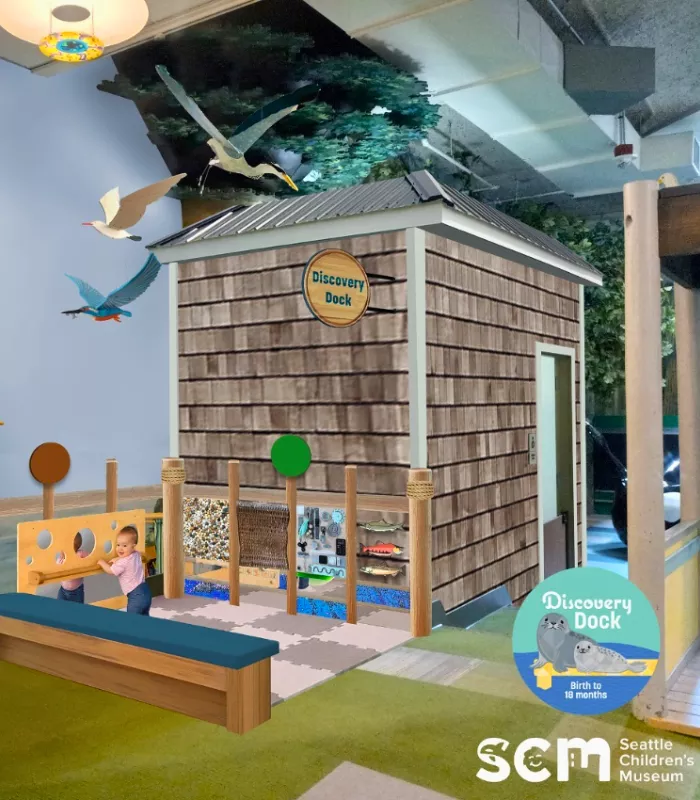
Located in Seattle Center, this museum targets families with children under 10. Admission costs $14 for both adults and children to explore hands-on exhibits and play areas.
The museum advertises itself as an educational destination for young minds.
Many exhibits feature toys and activities similar to what children have at home. Parents frequently report that older children become bored quickly due to age-inappropriate content.
The maintenance quality has declined according to local media reports and visitor reviews.
Why It’s On This List: Cheapism ranked it as Washington’s worst tourist trap due to poor exhibit maintenance, unoriginal activities, and high admission costs for limited entertainment value.
12. Blake Island State Park Tour, Washington

This ferry tour takes visitors to Blake Island for Native American cultural presentations and salmon dinners. The package costs around $70-90 per person including boat transportation and buffet meal. Marketing emphasizes authentic Pacific Northwest cultural experiences.
Tour boats often carry 250+ passengers creating overcrowded conditions. The buffet features generic items like beef stew, white rice, and polenta rather than traditional Native American cuisine.
The cultural performances receive criticism for appearing amateurish and inauthentic according to local reviewers.
Why It’s On This List: Visitors consistently complain about overcrowding, poor food quality, and cultural presentations that feel more like tourist entertainment than authentic experiences.
13. Washington State Fair, Washington
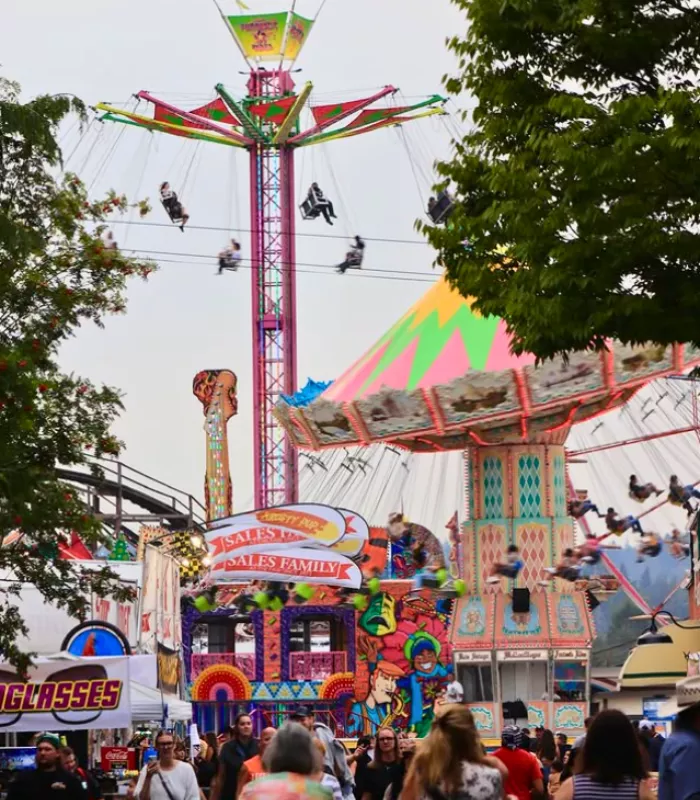
Held annually in Puyallup, this fair runs for several weeks each September. General admission ranges from $16-20 per person with additional costs for rides, games, and food. The event attracts over one million visitors seeking classic fair experiences.
Parking fees add $15-25 to the total cost while food prices reach theme park levels. Long lines form at popular attractions making wait times excessive during peak hours.
That’s why many families spend over $200 for a single day without getting full value from the expensive admission and activity costs.
Why It’s On This List: High entrance fees combined with expensive food, parking charges, and long wait times create an overpriced experience that disappoints budget-conscious families.
14. Snoqualmie Falls Gift Shop, Washington
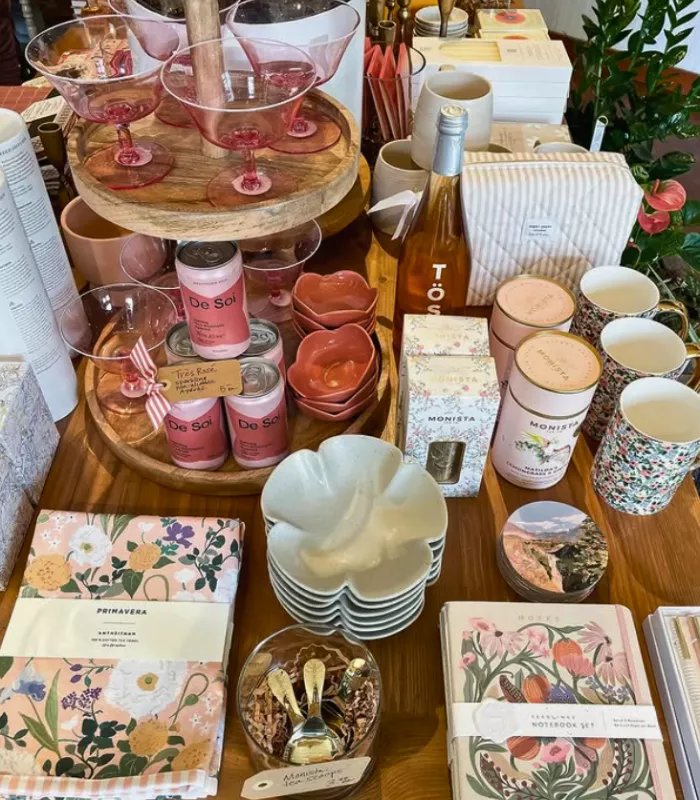
Adjacent to the spectacular 268-foot Snoqualmie Falls, this gift shop capitalizes on visitors to the natural landmark. The falls themselves are free to view, but the attached commercial area pushes typical tourist merchandise. Most visitors come specifically to see the waterfall.
The gift shop charges premium prices for standard souvenirs available elsewhere for much less. Staff frequently pressure visitors to make purchases while they’re admiring the natural scenery.
You’re better off enjoying the free waterfall views without entering the commercial area.
Why It’s On This List: The beautiful natural attraction gets commercialized with overpriced souvenirs that detract from the genuine scenic experience visitors came to enjoy.
15. Leavenworth Nutcracker Museum, Washington
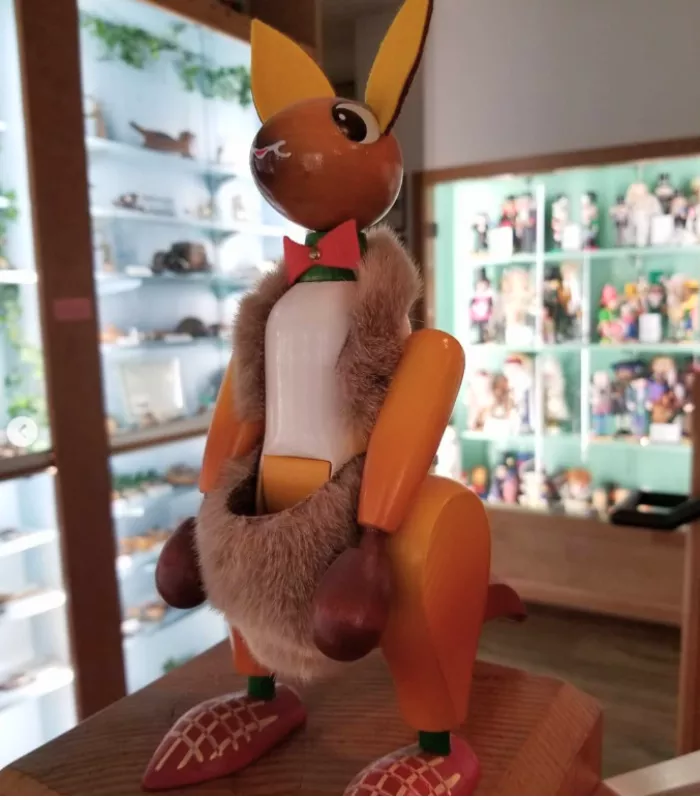
This specialized museum in the Bavarian-themed town of Leavenworth houses over 7,000 nutcrackers from around the world. Admission costs $5 per adult to view the collection housed in a small building. The exhibits showcase nutcracker history and craftsmanship.
The museum consists of just a few rooms that most visitors complete in 15-20 minutes. The narrow aisles become congested when tour groups arrive simultaneously.
Unless you have specific interest in nutcracker collecting, the attraction offers limited appeal to general tourists.
Why It’s On This List: The extremely specialized focus appeals only to niche collectors, making it a waste of time and money for most visitors expecting broader entertainment.
16. Westport Aquarium, Washington
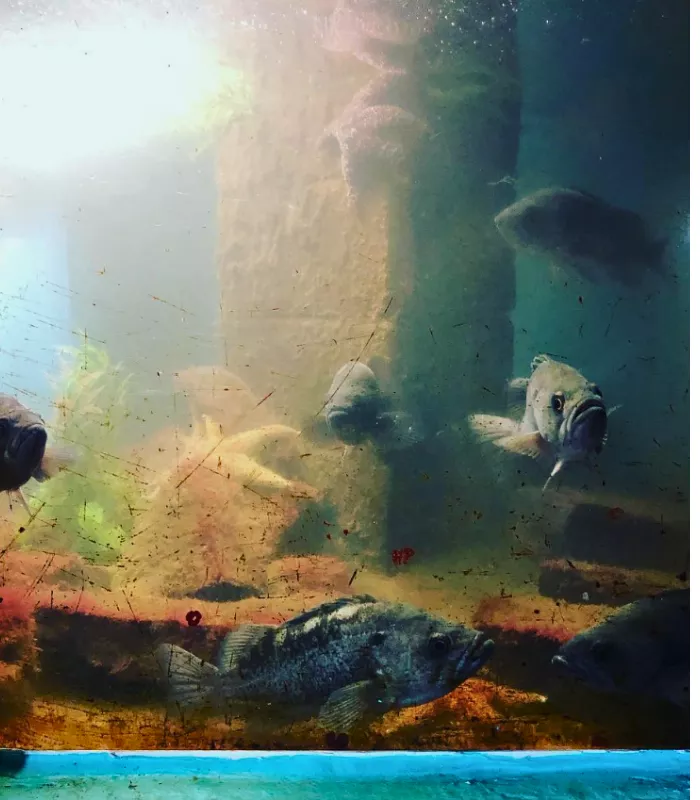
Located in the coastal town of Westport, this small aquarium features local marine life in modest display tanks. Admission fees seem high considering the limited size and scope of exhibits. The facility markets itself as an educational marine center.
Many tanks appear outdated with minimal interactive elements for visitors. The building feels cramped when busy with families during the summer months.
But here’s the catch – nearby beaches and tide pools offer better marine life viewing opportunities at no cost.
Why It’s On This List: Visitors report feeling overcharged for a small facility when superior natural marine viewing exists for free along the nearby coastline.
17. Bavarian Lodge Restaurant, Washington

Part of Leavenworth’s manufactured German theme, this restaurant serves Germanic cuisine at tourist-inflated prices. The Alpine decor and costumed staff create an artificial European atmosphere for American visitors. Menu items cost significantly more than comparable German restaurants in major cities.
The food quality doesn’t justify the premium pricing according to many customer reviews. Service often becomes slow and impersonal during peak tourist seasons.
Authentic German restaurants in Seattle offer better food at lower prices without the manufactured theme park atmosphere.
Why It’s On This List: The artificial theming comes with inflated prices while food quality remains mediocre, making it a classic example of tourist exploitation.
18. Olympic Game Farm, Washington
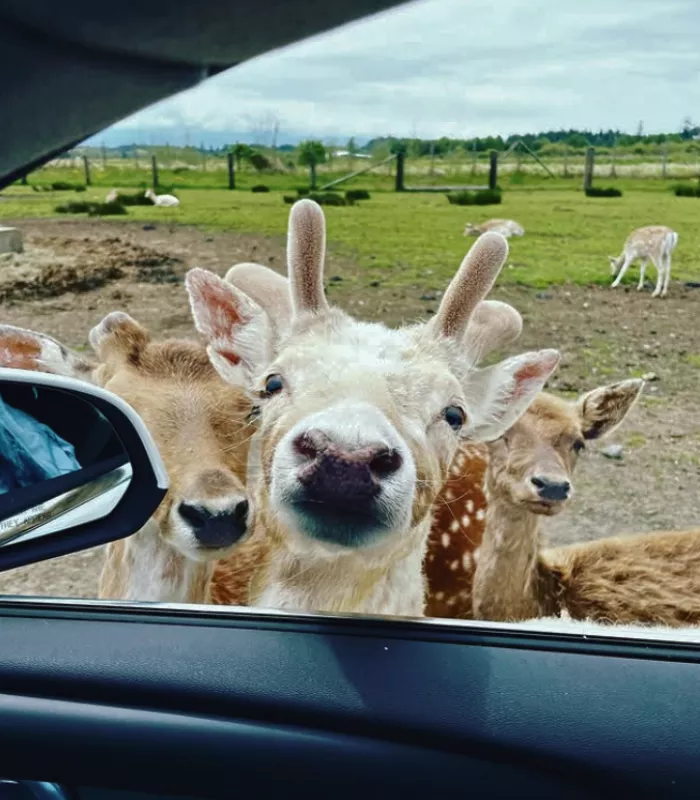
Located near Sequim, this drive-through wildlife park houses retired movie animals and other species. Visitors pay admission to drive through enclosures where animals approach cars for feeding. The facility advertises close encounters with bears, zebras, and other exotic animals.
Many animals appear lethargic or stressed, according to animal welfare critics. The enclosures look dated and inadequate for proper animal care and enrichment.
I made a classic mistake of expecting a quality wildlife experience, but found depressing conditions instead.
Why It’s On This List: Ethical concerns about animal welfare combined with outdated facilities create an experience that disturbs rather than entertains many visitors.
19. Whidbey Island Lavender Farms, Washington
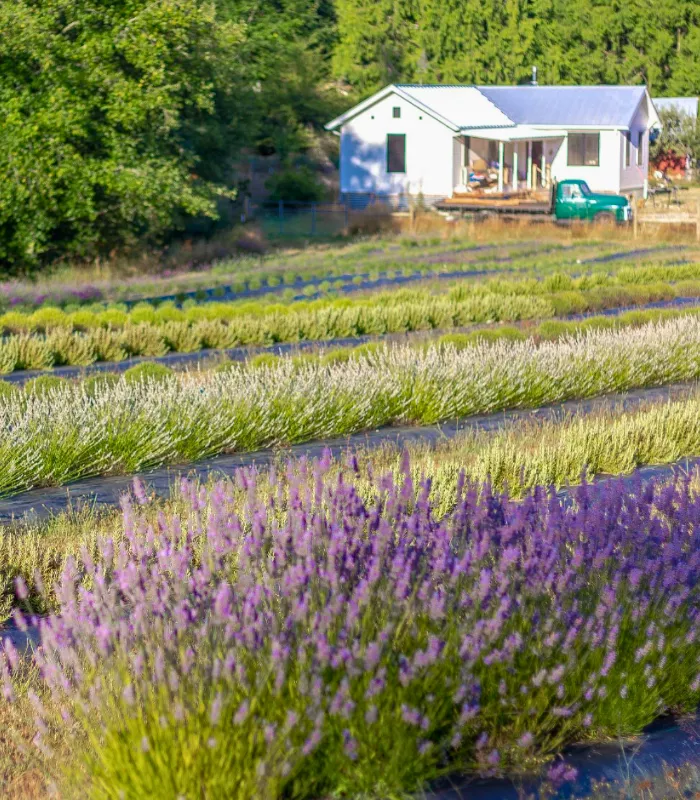
Multiple lavender farms on Whidbey Island charge admission fees for visitors to walk through purple flower fields. Peak blooming season lasts only 2-3 weeks in July, but farms operate tours throughout summer. Photography and lavender product sales provide the main attractions.
Outside the brief blooming period, fields look unremarkable and don’t justify admission costs. Gift shops push expensive lavender soaps, oils, and dried flowers at premium prices.
Most visitors discover they’ve paid to see ordinary agricultural fields with minimal entertainment value.
Why It’s On This List: Short blooming seasons mean most visitors pay admission fees to see unimpressive fields while being pressured to buy overpriced lavender products.
20. Tacoma Glass Blowing Studio Tours, Washington
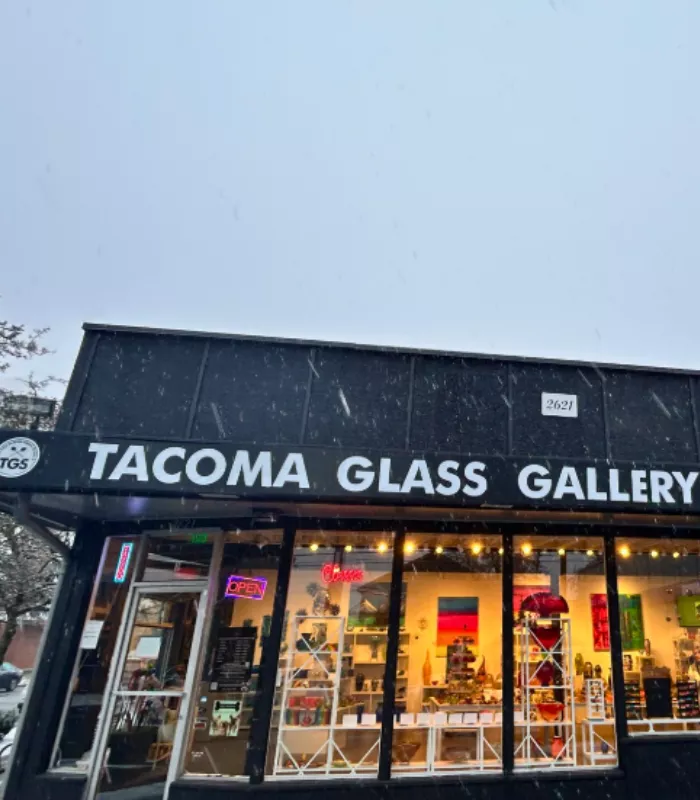
Several glass studios in Tacoma offer paid tours showcasing local artisans creating glass pieces. Tour prices range from $15-25 per person for demonstrations lasting 30-45 minutes. Studios market these as unique behind-the-scenes experiences.
Tours often feel rushed and scripted with limited interaction between visitors and artists. Studios pressure guests to purchase expensive handmade glass pieces following demonstrations.
Want me to save you money? Similar glass blowing demonstrations are available for free at many craft fairs and art festivals throughout Washington.
Why It’s On This List: Paying for brief, commercialized demonstrations when free alternatives exist makes these studio tours unnecessary expenses for budget-conscious travelers.
